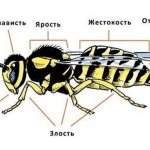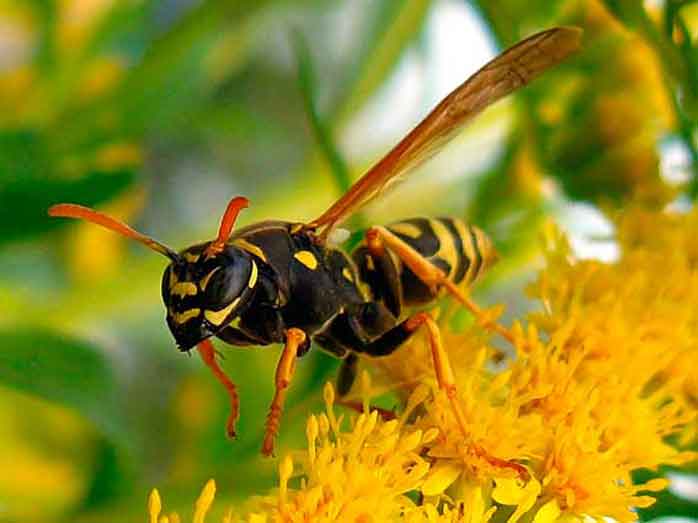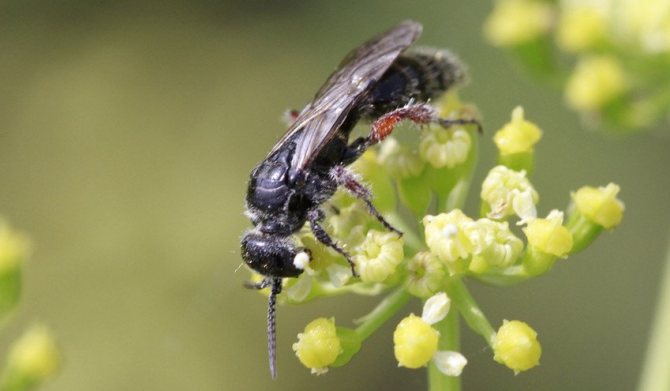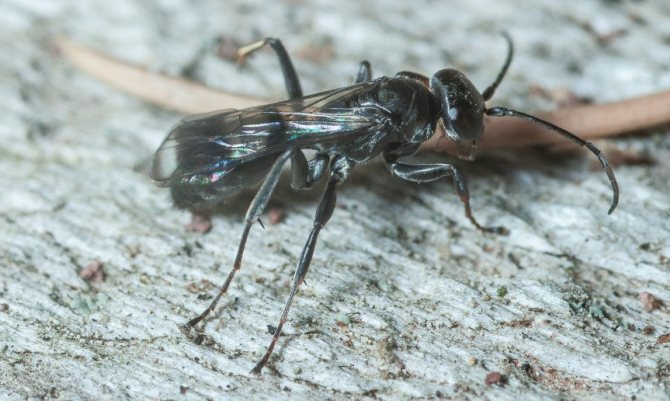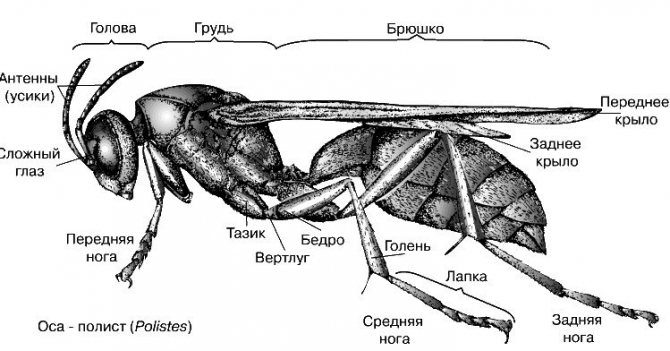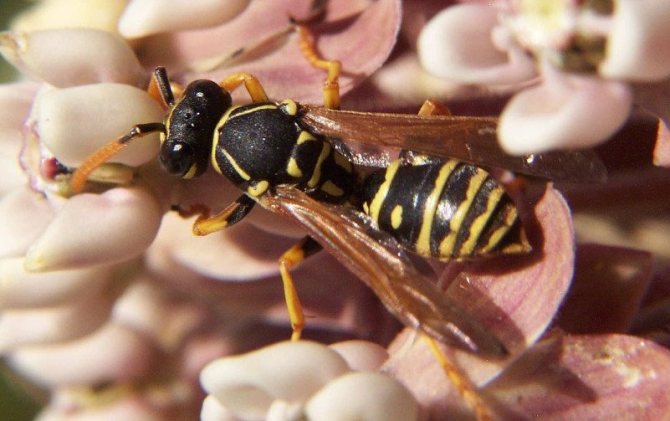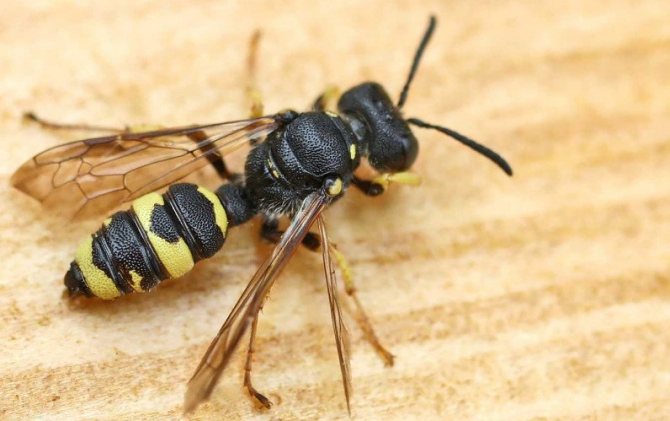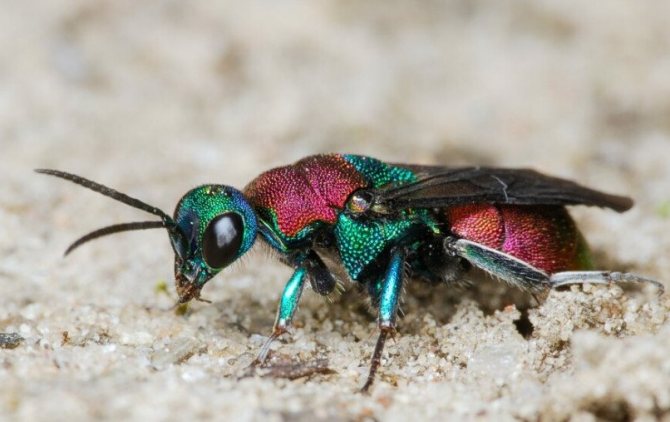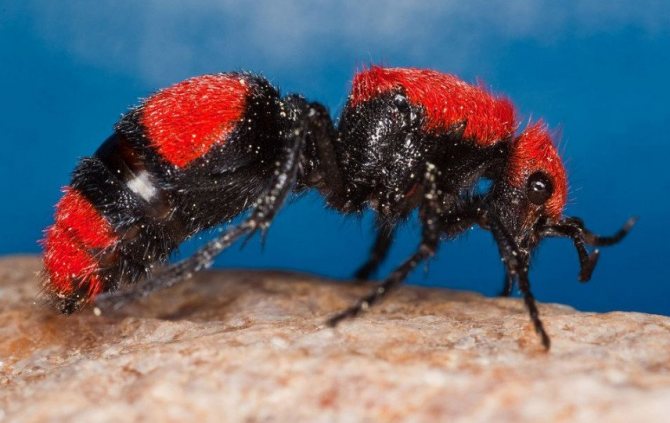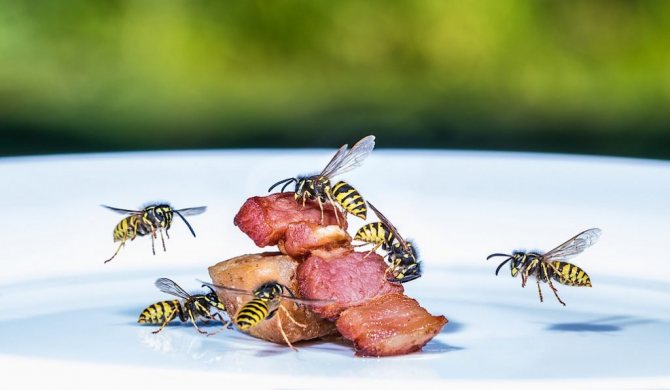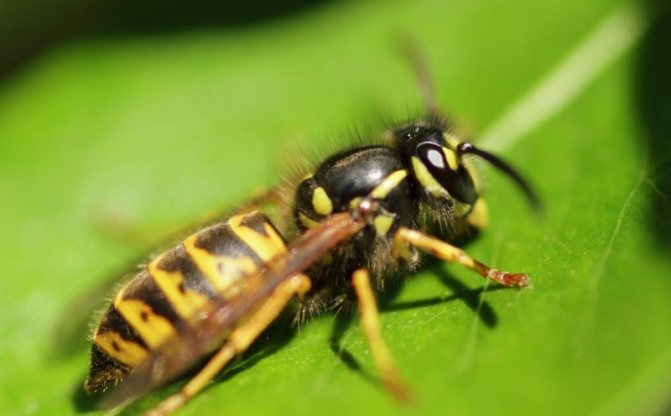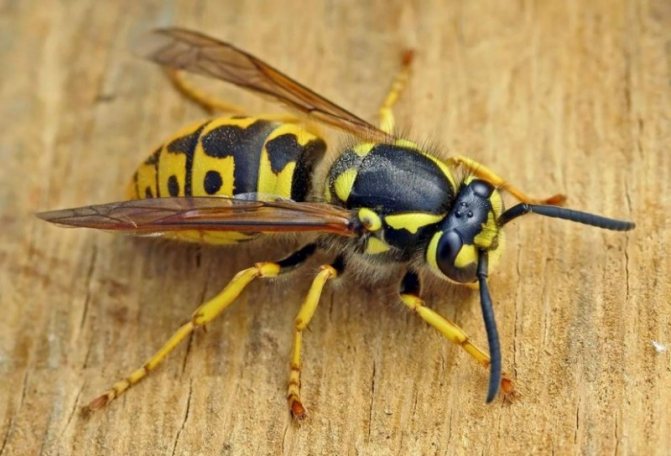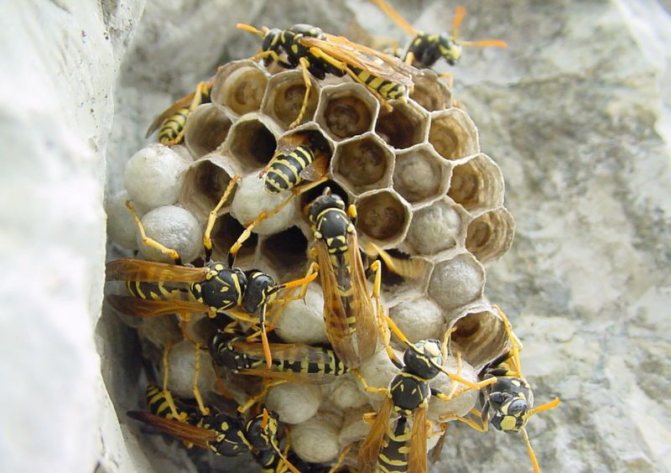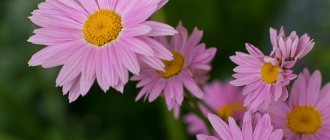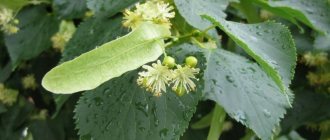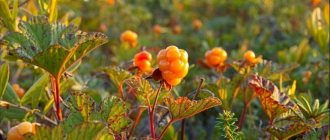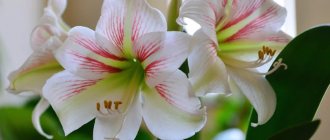You can easily learn how different types of wasps look, both from biology textbooks and in other information publications, including on the Internet. Everyone knows the common wasp, since it differs from other insects in its yellow-black striped color, the presence of a small mustache and transparent wings. The common wasp often settles next to a person, in a personal or summer cottage. To do this, a colony of wasps builds their nests either in the ground, or in trees, or in the attics of outbuildings, etc. In fact, in nature there are many types of wasps that differ from each other, both in body shape and in the characteristics of life.
Wasp Anatomy

Wasps belong to the Hymenoptera, which are the most numerous group of insects, including about 155 thousand species. A feature of the structure of the body of these insects is that between the abdomen and the brisket there is a thin membrane in the form of a stalk, which contributed to the emergence of such a concept as the "wasp waist". The body of an insect consists of 3 parts - head, chest and abdomen. Despite the fact that all species differ in body color, but such colors as black, yellow and orange are always present.
The peculiarity of the structure of the wings can also be attributed to the distinctive feature of these insects. As a rule, the wings are rather thin and transparent, with distinctly visible veins. The hind wings are somewhat shorter than the front ones. They can shimmer in various colors, but they can also be completely colorless. Each paw of a wasp consists of 5 segments. They perform various functions, including digging.
On the head of an insect, you can see whiskers of various shapes and lengths. Whiskers also perform various functions, including allowing the insect to navigate in space. The eyes are pronounced. The jaws, although they do not have teeth, are powerful enough to bite through the chitinous layer of an insect.
A wasp, like a bee, has a sting that is located on the underside of the abdomen. As a rule, only females can sting. The sting is quite thin and is associated with a gland that produces poison of various toxicities. With the help of poison, the wasp protects itself, its cubs, the nest, and so on.
Interesting fact! Males and females differ in size. As a rule, females are always larger than males. The females of some wasp species reach a length of about 5.5 cm. These insects belong to the skoli species and inhabit warm countries with a tropical climate. Some of the species can be found on our territory.
In the photos below, you can carefully see what the wasps look like. Wasp larvae are very different in appearance from adults, since they are not pure white caterpillars. These caterpillars are predators that feed on protein foods.
South Polybia
The wasp family includes many species. These insects have a very wide habitat. In the southern states of the United States, Mexico and the north of Latin America, the species Polybiinae Occidentalis is found. These wasps are surprisingly similar in habits to hardworking bees. These insects are not just their hairy body.
They also collect, digest and store flower nectar in the combs. And the question of whether there is wasp honey can be answered with confidence in the affirmative.The Indians of Yucatan ate the product of processing nectar from the nests of Polybia Occidentalis long before their arrival. However, the natives of America did not breed apiaries.
Wasp species
These insects were divided into 2 large groups, according to the main classification.
Public wasps
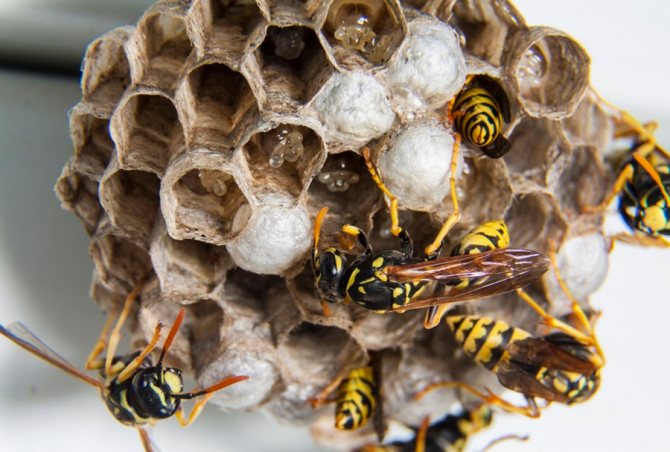

Such insects are often called by different names, including paper ones. Social wasps live in colonies in which there can be up to a million individuals. At the same time, they can build nests of various sizes, from an apple in diameter, up to a size of 60 cm. You can see this in the photographs.
In a large family, individuals are divided into castes, while they communicate using sounds and signals. The family is headed by the uterus, which is engaged in reproducing offspring. There are species of wasps, in the nest of which there may be several female queens, who do not have the status of the queen of the family, but are engaged in increasing the number of the wasp family.
Single wasps


This class of wasps differs in that each individual lives separately, so nests are not built. As a rule, these are predatory insects. They lay their future offspring on the bodies of the larvae of various large insects. In this case, the larva develops independently, feeding on the flesh of the larvae. After the destruction of its prey, the larva pupates and waits for the arrival of spring. After wintering, with the arrival of real heat, an adult wasp emerges from the pupa. Single wasps are quite poisonous, and their bite is compared to piercing human skin with a hot metal. Photos and names of wasps can be seen below in the text.
Interesting to know! Public wasps have several more names: wood, paper, etc. Single wasps are divided into species that bear names - sand, road, burrowing. Among all this diversity, there are species that are absolutely safe and useful, and there are parasitic wasps and killer wasps.
On the territory of our country, wasps can be found almost everywhere, and their variety is huge.
Food
Wasps are predators, but they do not shy away from sweets, on the contrary, they adore it. Almost everyone knows that if you leave a vase of honey or jam on an open veranda, then after a while you can find a whole flock of feeding wasps near it.


These insects collect flower nectar, but, being predators, they also eat small congeners of other species.
The predation of wasps is also manifested in the fact that in order to provide their larvae with food, they can lay eggs, for example, in a large caterpillar.
The wasp pierces the skin of the caterpillar, using its ovipositor like a scalpel, makes a clutch and - the larvae, having hatched, will begin to eat the body of the victim. Spiders, large beetles, and cicadas become such incubators.
Wasp lifespan


Different species differ among themselves also in that their life expectancy is different. In addition, male wasps live less than females, since they perform the function of fertilization. After mating, after a while, the male dies. Its lifespan is no more than 2 weeks.
Females that reproduce offspring are called queens or queens. They are also engaged in looking for a place for their nest, after which they reproduce offspring. The uterus of ordinary wasps lives no more than a year and dies when real cold weather sets in. Young females, ready to reproduce offspring, wait out the cold in the wood, and with the onset of spring they go on a journey to find a place for their nest. Wasps of other species that inhabit the planet in warmer climatic zones can live for several years.
Interesting Facts! Most of the aspen family are females that are not ready for mating. Therefore, they perform functions related to the construction of the nest, to find food in order to feed the larvae, to protect the nest, etc.The life span of such individuals is about 2 months.
Similarities and differences with bees
Wasps and bees live almost the same, if we are not talking about domesticated bees in an apiary. Theoretical data may differ from practical data. The sources provide different data.
The age limit for a worker bee is one year. However, insects that work with melliferous plants in the warm season die by natural death after 40 days. In spring, autumn, when activity decreases slightly, they live up to 60 days. Bees born in the fall tolerate winter well, raise larvae, and live up to 9 months.
The lifespan of bees in the active period from March to October is a maximum of 40 days, in the passive period from November to February, 180 days. Drones live up to 6 months. A queen in the wild can live for 5-8 years, beekeepers change queens every 1-2 years, if this is not done, a fertile female will live for about 4 years.
Interesting!
In critical conditions, when the uterus dies, working individuals can live longer than usual by 1 month.
Reproduction of wasps
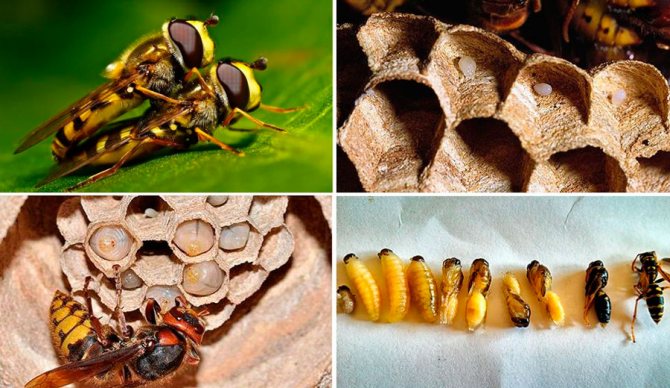

Different types of wasps breed in different ways: some of them lay their eggs in separate combs, like bees, and others in the bodies of their potential victims, which they pull into their burrows deep in the ground.
Breeding public wasps
The queen lays eggs in separate combs and, at the initial stages, takes care of the future offspring on her own, obtaining food for him. As soon as the first generation of worker wasps is born, they immediately begin to take care of the nest, as well as the larvae.
After laying eggs, after a few days, larvae appear from them, similar to worms. The larvae grow quickly, as adults bring beetles, spiders, flies, larvae of other insects, as well as pieces of meat for them. Over the course of 2 weeks, the larva has time to shed several times, while it noticeably increases and, finally, turns into a pupa. A young wasp comes out and gnaws a cocoon on its own. All this takes almost 3 weeks. Wasps are most active in the summer.
Breeding single wasps
Solitary wasps do not reproduce at such a rate, because for this they need to find a prey, dig a hole and drag the paralyzed insect into this hole. The wasp lays an egg on the body of the paralyzed victim, gets out of the hole and buries the hole. Moreover, for each larva, she needs to paralyze a potential victim and dig a hole. This does not take so little time. The larva feeds on the flesh of the victim, after which it pupates. In the state of a pupa, it is in the ground all winter. Such wasps live no more than six months.
Where are wasps found
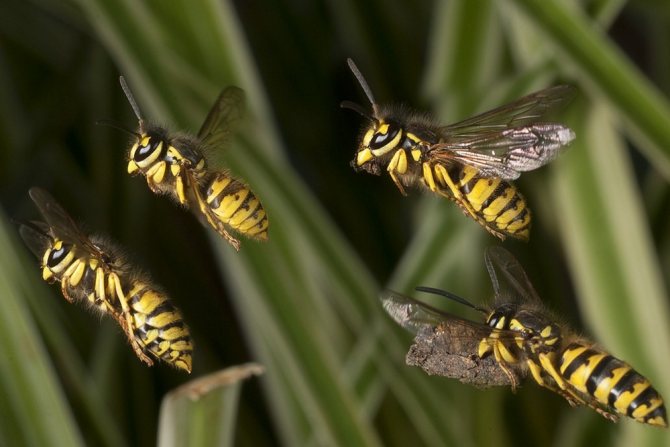

Wasp species that live in families build nests made up of individual elements called combs. Insects build their nests not far from those places where there is a lot of building material and food. Often, such places for this are abandoned nests, rodent burrows, tree hollows, etc. It is not so rare that wasps appear on personal or summer cottages, in various outbuildings, in the attics of houses, on balconies, etc. Here they live and raise their offspring throughout the summer, and with the arrival of autumn they leave the nest. Only young, fertilized females survive, which find refuge for themselves in various places.
Solitary wasps are found exclusively among wildlife. At night, they can be on the stems of various plants, holding onto them with their paws and jaws. They can climb into a flower. These insects behave like nomads, constantly changing their location.
How to get a hornet's nest basic ways
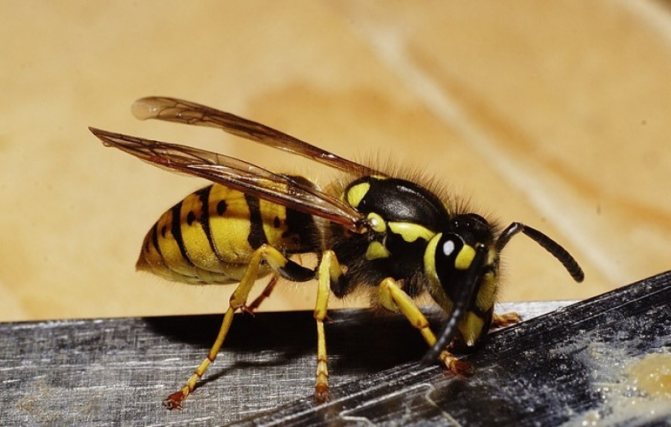

Wasps rarely build a nest right in the house or in the apartment, but this happens.In this case, the use of pesticides in their pure form, without improvised means, is not the best way out. You will not kill all the insects, and the surviving wasps will be so angry that even fleeing rescue will not help you get away from revenge.
How to remove a hornet's nest
Wait until night (the wasps will sleep) or do it early in the morning, put on clothes that are not accessible to the sting of insects, cover your face, neck, and protect your hands with gloves. There should be no one in the room, just you and the wasps.
- Take the package (tight), very carefully put it on the socket, tighten in the place of its attachment.
- Punch a hole in the bag and insert a spray tip into it (no matter which you choose, it can be regular dichlorvos).
- Cover the nest with insecticide.
- Wait ten minutes. If possible, leave the bag for a couple of days so that the insects are guaranteed to die.
- Remove the wasp dwelling along with the package.
- Throw it away or burn it.
- Ventilate the room.
Interesting facts from the life of wasps


Only a few specialists are engaged in studying the features of the wasps. Thanks to them, a person can learn a lot of interesting things about these amazing creatures. For example:
- Small wasps are common wasps that live in families. The female grows up to 2 cm in length, and all other representatives of this species - up to 1.8 cm.
- Wood wasps are distinguished by the fact that they are dominated by a bright black-orange body color. Depending on the species, their size can be from 1 to 6 cm.The hornet also belongs to this family and is distinguished by rather impressive dimensions. It is considered one of the most dangerous insects. The synodica wasp also refers to tree wasps, but little is known about it.
- Asian hornets inhabit mainly China and Japan, where up to 50 people die from their bites every year, as evidenced by official figures. The size of the insect is up to 5.6 cm. Its bite is enough for a person to die, especially an allergic person.
- Large spotted scolias are considered the most beautiful representatives of the wasp species. The female grows in length up to 5.5 cm, and the male - up to 3.2 cm. Scoliates lay their eggs on the body of May beetles or rhinoceros beetles. They differ in that they live apart. It is considered an insect safe for humans, despite its impressive size. The result of a bite is a simple numbness of the bite site.
- German women, no more than 3 cm in size. Females do not have wings and look like large ants. The female is distinguished by rather bright colors, compared to the males, which have more brown tones. They do not build their own nests, choosing bee hives or nests of other wasps for their livelihoods.
There are a huge number of Hymenoptera species on the planet, and each species has its own unique characteristics.
Alcoholic cocktail dessert
Experienced baristas know how to make wasp honey with their own hands. To do this, you need to beat four egg yolks, add them to a jar of condensed milk. Also work with a mixer, achieving airiness of the mass. After that, mix a spoonful of instant coffee with a very small amount of boiling water (so that the granules disappear).
Waiting until nightfall, dressed in closed clothes, did everything as Nikolai Ivanovich said. In this article, you will learn: how to breed a hornet's nest, what are considered safe methods of control, which drugs and traps are best used, how to prevent their reappearance.
Natural enemies of the wasps


Nature is arranged in such a way that every living creature on the planet has its own natural enemies. Wasps are no exception, despite the fact that they are armed with a venomous sting. For example:
- The nests of wasps that were left without a queen are actively ravaged by ants, while destroying weak or sick individuals.
- The paradoxical fan hunts wasps, which sneaks into the wasps nest and lays eggs. The larvae of this insect parasitize on young wasps.
- Hornets are the most dangerous and formidable enemies of wasp families. In one attack, hornets are able to destroy an entire family of wasps, since they have an advantage in size, as well as in numbers.
- Wasps are also hunted by wasp-eating birds that feed the chicks with larvae and adults.
With the arrival of autumn, when the air temperature drops noticeably, the wasps become not so active, therefore, they become victims of some insects and birds.
It is difficult to meet a person who has not encountered wasps in his life: they are everywhere. They can be found both in small villages and in metropolitan areas. You can even say this: where there is a person, there are wasps, since next to a person this insect can always find food for itself.
Should we look for honey in a wasp's nest in our latitudes
Everyone can notice that nimble yellow-black insects love to feast on sweets. It is worth opening a jar of honey or jam - and they are right there. Wasps circle over flowering meadows and over apple and linden trees. Do these predators hunt bees or collect nectar? Gardeners believe that wasps pollinate plants no worse than shaggy toilers from hives.
But, unfortunately, striped insects not only lack the enzymes that allow pollen and nectar to turn into honey, but even a proboscis for collection. Wasps are not averse to feasting on the sweet juice of flowers, but they do not store it in their nests and do not harvest it for the winter. But still there is something similar to honey in their combs. This substance is called "napryk". It's a thin layer of honey, as miserable as the amount of wax that covers cooking paper.

